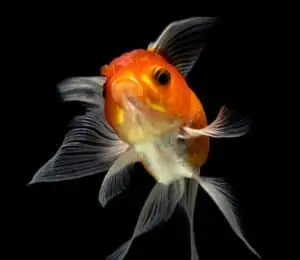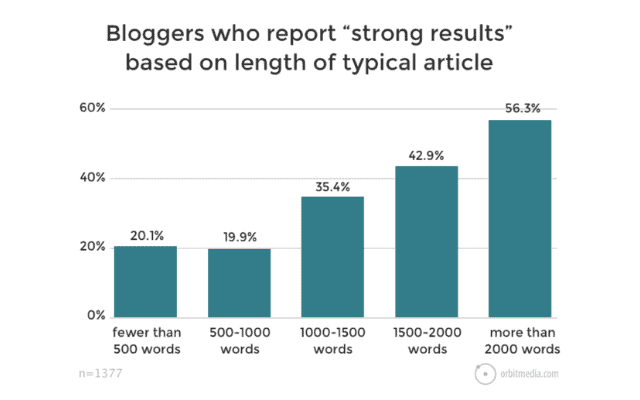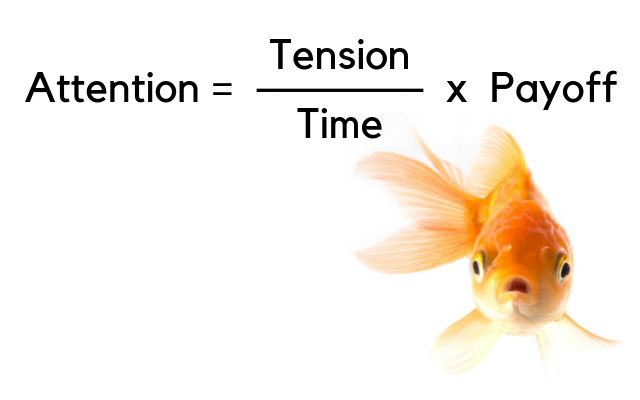
You Now Have a Shorter Attention Span Than a Goldfish — TIME Health
The Eight-Second Attention Span — The New York Times
Our Attention Span Now Worse Than Goldfish’s — USA TODAY
While “science” may have reduced us to a smartphone-wielding, overstimulated population of rubber balls bouncing from one screen to the next, don’t be so quick to take that information as fact.
We have incredibly long attention spans when it comes to the content we want to consume. How often has Netflix stopped to ask if you’re “still watching?” 5 hours into binging The Great British Baking Show? Yes, I’m still watching Mary Berry reduce these amateurs to tears over their underdone, soggy-bottom pastries, OK?
The key word in the paragraph above was “want” (not soggy-bottom).
As marketers, we’re often tasked with distributing content people don’t NEED. We’re usually pushing content in front of our audience — content that they didn’t ask for — so we have to make them WANT it.
Beware of Clickbait: Don’t Tap the Tank
Grabbing attention is easy. Holding attention is a skill.
Perhaps the simple goldfish only appears to have lost interest in your tapping finger because you don’t offer it anything more. Sure, your sudden, incessant tapping on the glass wall was more than enough to catch the attention of your floating friend, who swam over to investigate the disturbance. Satisfied with the answer (and was that an eye-roll?) he swam off to other pursuits.
Clickbait headlines are the finger-tapping-on-a-glass-fish-tank of the online world. As internet browsers and email users, we’re constantly inundated with annoying taps from every angle.
TAP! He Paid Off $10,000 In Credit Card Debt With This One Simple Hack — Here’s How
TING! 30 Strict White House Rules You Won’t Believe Melania Trump Has To Follow
PANG! Never Shop Online Again Without This One Amazing Trick
While these claims catch our attention and sometimes warrant investigation, how often does the underlying content hold up to the sensationalization? Just ask the goldfish.
Grabbing attention is easy. Holding attention is a skill.
5 Tips for Attention-Holding Content
1. Don’t be afraid of long-form content.
Marketers have typically reserved long-form content for the middle or bottom of the funnel, where the audience has already shown a strong interest and needs in-depth resources to convert. But long-form content has a place at the top of the funnel, too, so long as it can hold attention.
Bloggers are writing more posts greater than 1,000 words, a trend that has continued over the past four years. More important than the volume of long-form blog posts is the success bloggers are having with them.

Find more data like this from Andy Crestodina’s 2017 survey on blogging trends.
2. Back up your claims.
Nothing is more disappointing than getting amped up over an exciting headline only to click through and find nothing related to the promise. That’s the definition of clickbait.
Some clickbait is easy to detect, but more subtle marketing headlines can slip past even the most discernible detector. Even if your content is quality, you’ll lose the visitor immediately (and permanently) if it doesn’t match the expectations you set in your headline.
3. Create a curiosity gap.
When there is a disconnect between what the reader (or viewer) knows and what they want to know, there is a curiosity gap. Curiosity gaps are all around you and make you crave more information.
A compelling headline, intro, email, or social media post can create the perfect gap and make users want to dive in for more.
4. Do the math.
Content that holds attention must follow this basic equation.
Curiosity gaps are built on tension, which stems from our deep desire for closure. We go from wanting to know to needing to know and won’t stop until we find a concrete answer. The longer this gap persists, the deeper our desire grows.
But how long can you withhold the resolution from your audience before they lose interest? That’s where the payoff comes in.
The payoff — the promise of what will come at the end — must be proportional to the tension you’ve built. Too little-perceived payoff and the reader will abandon ship. Give away too much in the beginning, and the reader won’t jump aboard in the first place.
Thanks to Andrew Davis for this equation and his attention-holding keynote at Content Marketing World that inspired this post.
5. Keep them in suspense.
We often feel the need to be overtly obvious with our solution. After all, how will the audience know what to do/buy/think if we don’t tell them immediately?
Suppress the urge to pitch your product/solution up front. That’s the easy way out. Spend a little time building curiosity. Create some tension. Make the payoff worth it.
What you consider front-page news may not be at the top of your audience’s mind. Consider your audience’s perspective and create content that speaks to their needs.



